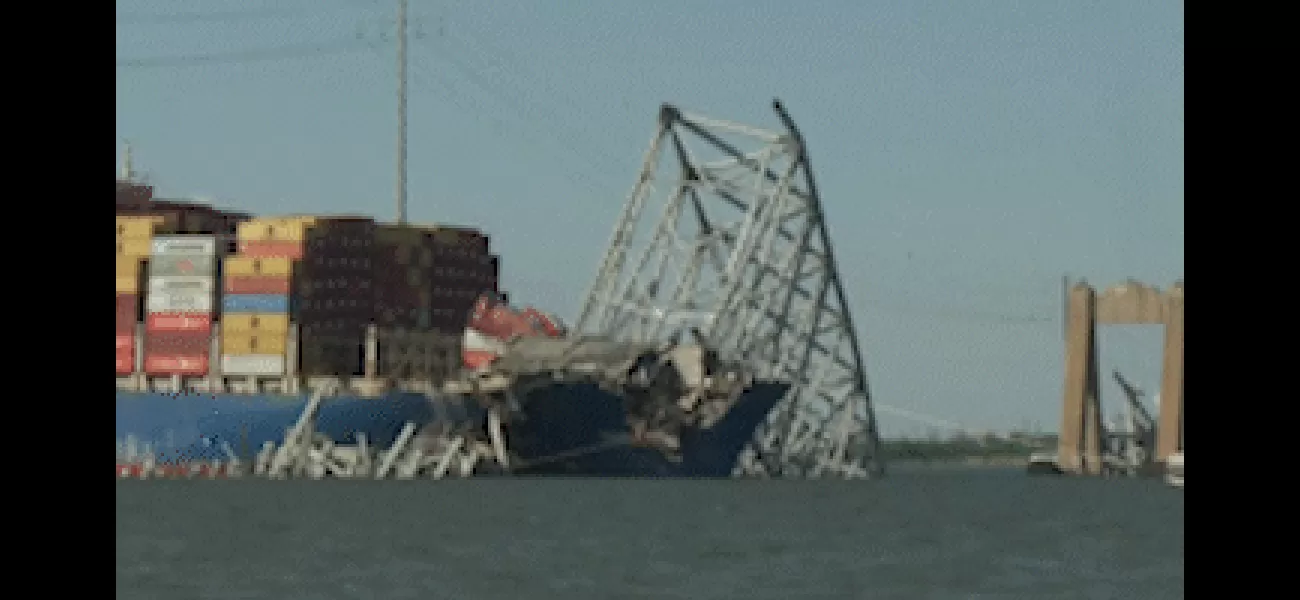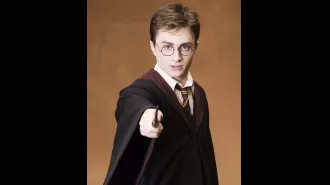Team destroys Baltimore bridge in controlled manner.
Explosives went off, emitting orange light and black smoke, causing the bridge to collapse into the water quickly.
May 13th 2024.

A coordinated effort was underway as crews worked to safely bring down the remaining section of the Francis Scott Key Bridge in Baltimore. The use of controlled demolition was chosen as the most effective method to remove the largest span of the collapsed structure. With a flash of orange and a cloud of black smoke, the explosives did their job and the section quickly crumbled into the water.
The collapse of the bridge had been a major setback for the Dali container ship, which had been stuck in the wreckage since it collided with one of the support columns on March 26. The longest trusses of the bridge had fallen in the opposite direction, sliding off the bow of the grounded vessel. This marked a significant step towards freeing the ship and allowing it to continue its journey.
For the past six weeks, the demolished section had rested on the bow of the Dali, hindering any progress for the ship's crew. The tragic incident had claimed the lives of six construction workers and had severely impacted maritime traffic through Baltimore's bustling port. The controlled demolition was a crucial step in the cleanup process and would pave the way for the Dali to be refloated.
The removal of the collapsed section would also bring much-needed relief to the thousands of workers whose jobs had been affected by the bridge closure. The longshoremen, truckers, and small business owners who relied on the port for their livelihoods would soon see a return to normal operations. The Dali's crew members, who had been confined to the ship since the accident, had been busy assisting with maintenance and the ongoing investigations.
Authorities had taken a meticulous approach to the demolition, using precision cuts to carefully control how the trusses would fall. This method allowed for surgical precision and was deemed the safest and most efficient way to remove the steel structure under high tension. Once the sections were cut, hydraulic grabbers would lift them onto barges for further disposal.
The crew members of the Dali, most of whom were from India and one from Sri Lanka, had been unable to leave the grounded ship since the disaster. However, they had been diligently carrying out their duties, maintaining the vessel and cooperating with investigators. The National Transportation Safety Board and the FBI were both conducting investigations into the bridge collapse, with a particular focus on the ship's electrical system.
The Dali was originally chartered by the Danish shipping giant Maersk for a journey from Baltimore to Sri Lanka. However, the ship never made it far, as a mayday call was sent out by the crew reporting a loss of power and control over the steering system. Tragically, just minutes later, the ship collided with the bridge, leading to the catastrophic collapse. The investigation would seek to uncover any potential issues with the ship's electrical system that may have contributed to the accident.
The collapse of the bridge had been a major setback for the Dali container ship, which had been stuck in the wreckage since it collided with one of the support columns on March 26. The longest trusses of the bridge had fallen in the opposite direction, sliding off the bow of the grounded vessel. This marked a significant step towards freeing the ship and allowing it to continue its journey.
For the past six weeks, the demolished section had rested on the bow of the Dali, hindering any progress for the ship's crew. The tragic incident had claimed the lives of six construction workers and had severely impacted maritime traffic through Baltimore's bustling port. The controlled demolition was a crucial step in the cleanup process and would pave the way for the Dali to be refloated.
The removal of the collapsed section would also bring much-needed relief to the thousands of workers whose jobs had been affected by the bridge closure. The longshoremen, truckers, and small business owners who relied on the port for their livelihoods would soon see a return to normal operations. The Dali's crew members, who had been confined to the ship since the accident, had been busy assisting with maintenance and the ongoing investigations.
Authorities had taken a meticulous approach to the demolition, using precision cuts to carefully control how the trusses would fall. This method allowed for surgical precision and was deemed the safest and most efficient way to remove the steel structure under high tension. Once the sections were cut, hydraulic grabbers would lift them onto barges for further disposal.
The crew members of the Dali, most of whom were from India and one from Sri Lanka, had been unable to leave the grounded ship since the disaster. However, they had been diligently carrying out their duties, maintaining the vessel and cooperating with investigators. The National Transportation Safety Board and the FBI were both conducting investigations into the bridge collapse, with a particular focus on the ship's electrical system.
The Dali was originally chartered by the Danish shipping giant Maersk for a journey from Baltimore to Sri Lanka. However, the ship never made it far, as a mayday call was sent out by the crew reporting a loss of power and control over the steering system. Tragically, just minutes later, the ship collided with the bridge, leading to the catastrophic collapse. The investigation would seek to uncover any potential issues with the ship's electrical system that may have contributed to the accident.
[This article has been trending online recently and has been generated with AI. Your feed is customized.]
[Generative AI is experimental.]
0
0
Submit Comment





